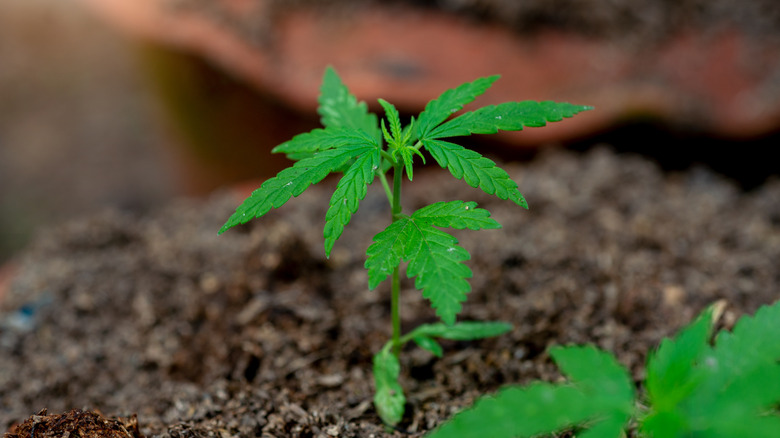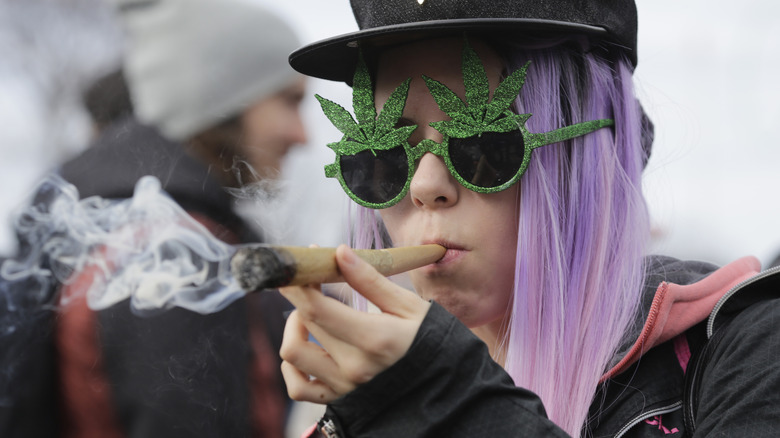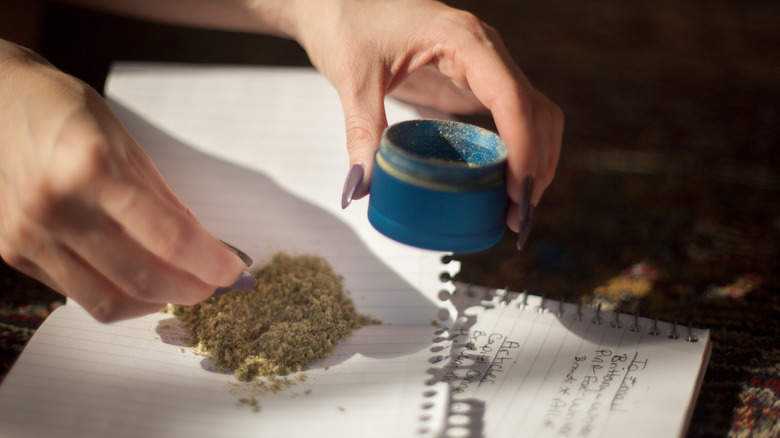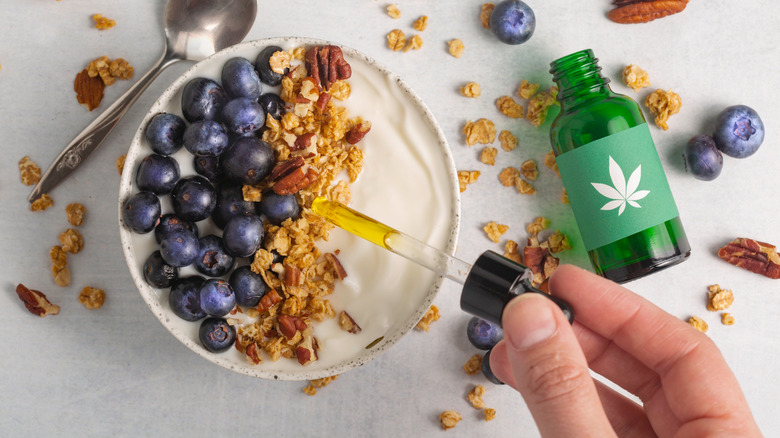The Messed Up Way Marijuana Was Made Illegal
In 2012, the states of Colorado and Washington became the first in the United States to legalize recreational marijuana, a move which started a trend that has only gained momentum throughout the rest of the country since then. As of February 2022, 18 states, along with Washington D.C. and Guam, have legalized recreational use of the drug, according to the U.S. News & World Report. And according to CNBC, the U.S. Senate is making moves to finally put an end to the federal pot prohibition, as well.
A British study reported by Reuters found that marijuana was nowhere near as dangerous as drugs that are generally legal and easily available, such as alcohol and tobacco. Yet, reefer is classified by the federal government as a Schedule I drug, the class of the supposedly most dangerous banned substances, such as heroin and LSD. (Fun fact: Cocaine and meth are actually Schedule II drugs, categorically "safer" than marijuana, according to a 2017 Drug Enforcement Agency resource guide.) So with more and more dispensaries popping up across the country each year and the culture of weed smoking becoming more normalized, lots of folks might be asking how and why this plant was made illegal in the first place.
Marijuana was legal and widespread until the 20th century
According to PBS's Frontline, up until the end of the 19th century, Americans were actually encouraged to cultivate the cannabis plant, or hemp. (Though hemp and marijuana both come from the cannabis plant, hemp is bred to have a much lower concentration of THC, the chemical in pot that gets you stoned, according to History.) It was used to make clothing, rope, and other products. Virginia farmers, in fact, were required to grow it in the 17th century, and several colonies used it as legal tender. Marijuana plantations were widespread throughout Mississippi, Georgia, California, South Carolina, Nebraska, New York, and Kentucky.
Toward the end of the 19th century, cotton replaced hemp as the material of choice for clothing. Instead, it became a popular ingredient in medicines. You could find it in just about any pharmacy in the country back then. At the same time, the recreational use of hashish spread from the salons of France to some quarters of the United States, according to PBS.
Marijuana is illegal because people are racist
Americans didn't have a problem with marijuana until migrant workers from Mexico began coming to states like Louisiana and Texas at the beginning of the 20th century, as noted by the Drug Policy Alliance. Americans grew antagonistic toward these immigrants, despite taking advantage of their labor. The Mexican workers called the plant marihuana, as it's called in Spanish, and even though most Americans had the drug in their medicine cabinets (listed as "cannabis"), the plant became newly exotic and something to fear. By 1931, 29 states had banned marijuana, according to PBS Frontline, and the United States had created the Federal Bureau of Narcotics, the forebearer of the DEA.
Meanwhile, Black jazz musicians began to adopt the drug as part of the "hep cat" lifestyle, according to History. Marijuana even was immortalized in song lyrics, such as in the Cab Calloway hit "Reefer Man."
Though the prohibition on alcohol ended at this time, cannabis' recreational popularity among people of color made it an easy target. Unfounded and racist claims that weed made men of color violent and overtly sexual toward white women were presented in hearings on marijuana in the 1930s, and sale and use of the plant was made illegal by the Marijuana Tax Act of 1937. Its place in the Schedule I category was made by the Controlled Substances Act in 1971.
The prosecution of marijuana possession has changed over time
But even after the drug was made illegal, its place in the culture continued to grow and become normalized, particularly during the counterculture of the 1960s. By the following decade, 11 states had decriminalized weed, and even the Nixon-appointed Shafer Commission recommended decriminalizing the drug federally. (President Nixon ignored the recommendation, though President Carter openly supported nationwide decriminalization, per PBS Frontline.) Mandatory minimum sentences for drug possession were relaxed.
In 1986, President Reagan signed the Anti-Drug Abuse Act, reinstating minimum sentencing for drug offenses. Marijuana was not granted much leniency — possessing 100 marijuana plants got the same penalty as possessing 100 grams of heroin. President Clinton made the penalties even harsher, tacking on a "three strikes" rule in his Violent Crime Control and Law Enforcement Act of 1994, per The Atlantic. Drug arrests skyrocketed, according to Britannica. Though there have been tweaks over the years, the bulk of the law, including mandatory minimum drug sentencing, is still in place (via National Organization for the Reform of Marijuana Laws).



